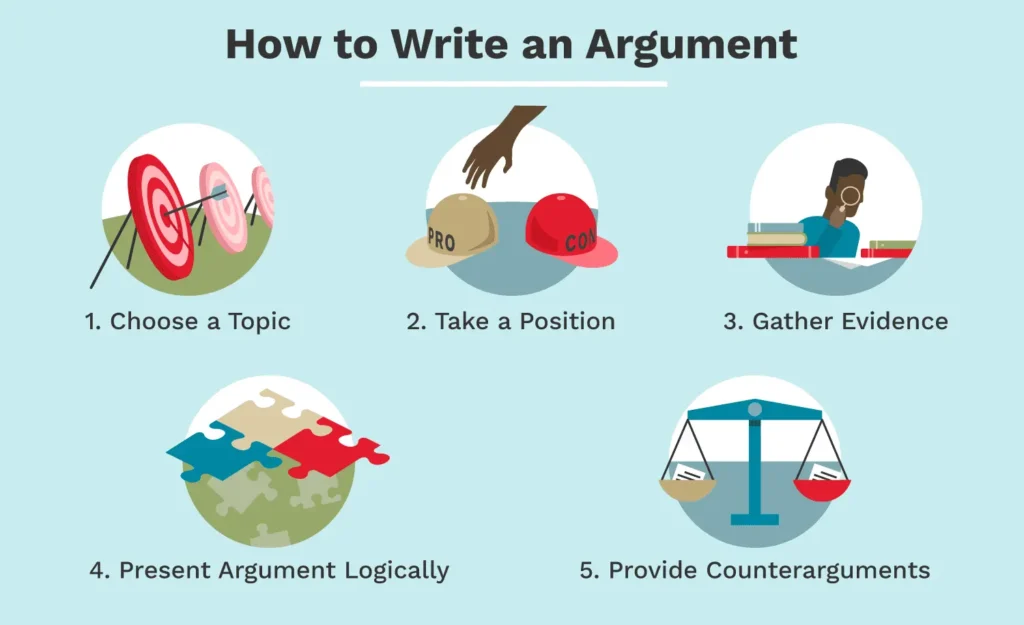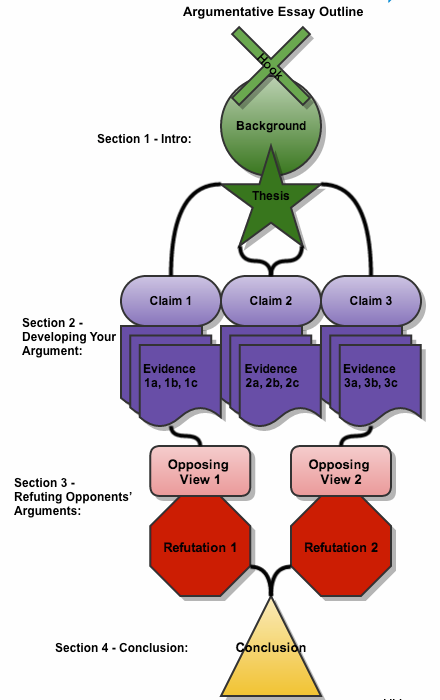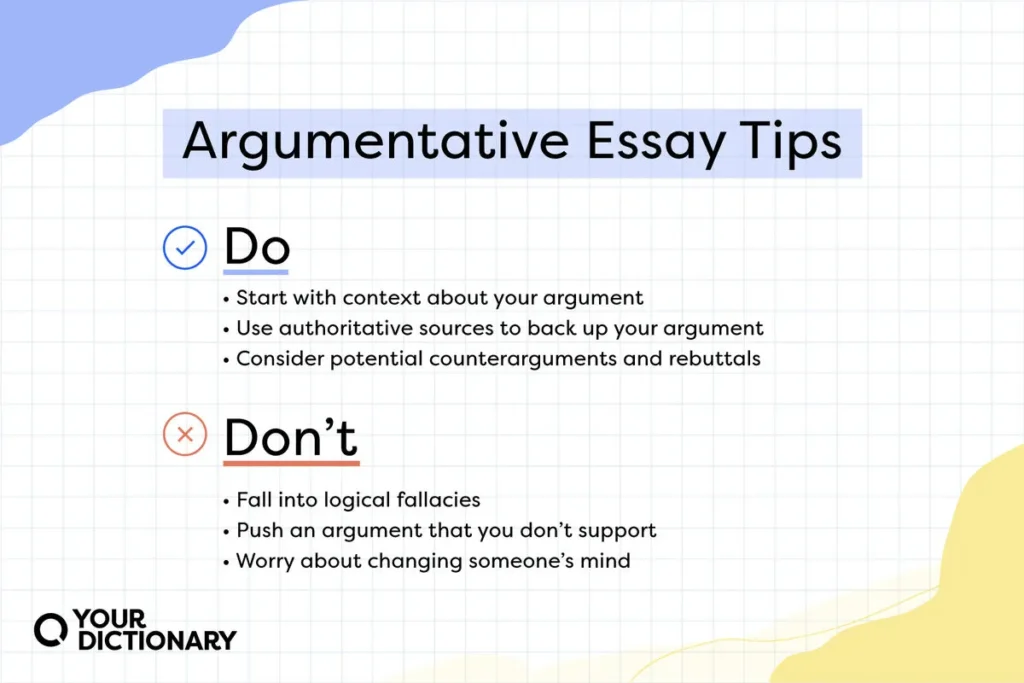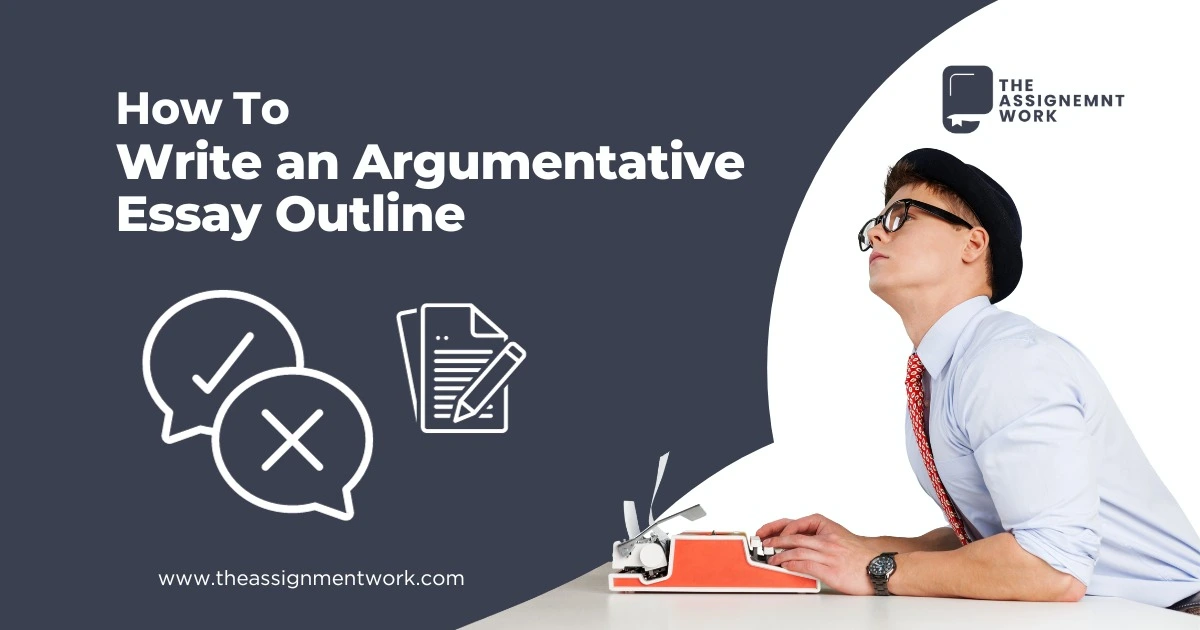Are you struggling to create an argumentative essay outline for your assignment?
If you’re seeking guidance on how to craft a compelling argumentative essay while tackling the challenges of your academic workload, you’ve come to the right place! In this comprehensive guide, we will provide you with step-by-step instructions on how to create an effective argumentative essay outline. Whether you’re a student in Australia in need of assignment help in Australia or a student anywhere else in the world, the principles and techniques outlined here will help you master the art of structuring your essay.
Crafting an argumentative essay outline is not only a skill that can boost your academic performance but also an essential tool for critical thinking and persuasive writing. By the end of this article, you’ll have the knowledge and confidence to tackle your argumentative essay assignments with ease and precision. So, let’s dive in and empower you to excel in your academic journey.
Understanding the Basics
 What Is an Argumentative Essay?
What Is an Argumentative Essay?
An argumentative essay is a type of academic writing that requires you to take a stance on a controversial issue and provide evidence to support your viewpoint. Unlike other forms of essays, such as expository or descriptive essays, argumentative essays demand critical thinking and persuasive skills.
Choosing a Topic
The first step in creating an argumentative essay outline is selecting a compelling and debatable topic. Consider issues that have two or more conflicting viewpoints. Your topic should be relevant, interesting, and capable of generating discussion. Ensure that there is enough credible information available to support your arguments.
Conducting Research
Once you’ve chosen a topic, it’s time to gather information to support your claims. Conduct thorough research by using reputable sources such as academic journals, books, and reliable websites. Take notes and keep track of your sources to avoid plagiarism.
Structuring Your Argumentative Essay in 5 Steps:
A. Introduction
When learning how to write an essay introduction, it’s important to understand that this section serves as the opening of your essay and should grab the reader’s attention. It should also introduce the topic, provide necessary background information, and end with a clear thesis statement. The thesis statement is a concise summary of your main argument.

B. Thesis Statement
Your thesis statement is the cornerstone of your argumentative essay. It should be clear, concise, and arguable. A well-crafted thesis statement will guide the entire essay and inform the reader of your stance on the issue.
C. Body Paragraphs
The body of your essay consists of multiple paragraphs, each presenting a single point that supports your thesis. Start each paragraph with a topic sentence, followed by evidence and examples to support your argument. Ensure that your paragraphs flow logically, with each one building upon the previous one.
D. Counterarguments
Addressing counterarguments demonstrates that you have considered opposing viewpoints. Acknowledge counterarguments within your essay and then refute them with strong evidence and reasoning. This not only strengthens your position but also shows your ability to engage in thoughtful debate.
E. Conclusion
The conclusion is where you summarize your main points and restate your thesis, but avoid introducing new information. Conclude with a strong statement that leaves a lasting impression on the reader. Your conclusion should reinforce the significance of your argument and why it matters.
Crafting Your Argumentative Essay Outline
A. Introduction
-
Hook:
- A compelling opening sentence or a thought-provoking question is essential to engage your readers from the very beginning. The hook should relate directly to your topic and stir curiosity.
Example Hook: “Did you know that every year, millions of tons of plastic waste end up in our oceans, endangering marine life and polluting our planet?”

-
Background Information:
- After the hook, provide context and background information related to your topic. This section should offer readers the necessary background knowledge to understand the issue you’re addressing.
Example Background Information: “The issue of plastic pollution has gained global attention due to its adverse effects on the environment and human health. With plastic production soaring and recycling rates lagging, finding solutions to this problem is more crucial than ever.”
-
Thesis Statement:
- Your thesis statement is the core of your argument. It should be clear, concise, and assertive. This sentence should state your position on the issue and provide a preview of the main points you will discuss in the body of your essay.
Example Thesis Statement: “This essay will argue that implementing stricter regulations on plastic production, promoting recycling initiatives, and raising awareness about the consequences of plastic pollution are essential steps in combatting the global crisis of plastic pollution.”
B. Body
-
Body Paragraph 1: Present Your First Argument or Point:
- Begin with a topic sentence that introduces the first argument or point you want to make.
- Provide strong evidence, examples, and data to support your argument. This evidence should be well-researched and clearly linked to your point.
- Explain the significance of this argument in relation to your thesis by addressing how it contributes to your overall position.
Example Body Paragraph 1: “Stricter regulations on plastic production are a necessary step in reducing plastic pollution. According to a study by [Source], countries with stringent plastic production regulations have significantly lower plastic waste in their oceans. Also according to OECD, 6.1 million tonnes (Mt) of plastic waste leaked into aquatic environments, and 1.7 Mt flowed into oceans in 2019. This requires serious regulations. For instance, [Example] saw a 30% reduction in plastic waste within two years of implementing such regulations. This demonstrates that government intervention plays a vital role in curbing plastic pollution.”
-
Body Paragraph 2: Present Your Second Argument or Point (Repeat the Same Structure):
- Start with a topic sentence that introduces your second argument or point.
- Provide evidence, examples, and data to substantiate this argument.
- Explain how this argument aligns with your thesis and strengthens your overall position.
-
Body Paragraph 3: Continue with Additional Arguments, If Necessary:
- Continue presenting additional arguments or points in separate paragraphs, following the same structure as outlined above. Each argument should build upon the previous ones, creating a coherent and convincing case for your thesis.
-
Counterargument Paragraph: Address and Refute Counterarguments:
- In this paragraph, acknowledge opposing viewpoints. Show that you’ve considered alternative perspectives, which demonstrates your credibility as a thoughtful debater.
- Provide evidence that weakens the counterarguments. Use logic, facts, and persuasive reasoning to cast doubt on opposing views.
- Reiterate your position to underscore why your stance remains the most valid and convincing.
C. Conclusion
-
Restate Your Thesis Statement:
- In the conclusion, restate your thesis statement, but avoid merely copying it verbatim. Rephrase it slightly to remind readers of your main argument.
-
Summarize the Main Points Made in the Body Paragraphs:
- Summarize the key points you made in the body paragraphs. Concisely review your arguments and the evidence you presented to support them.
-
Emphasize the Importance of Your Argument:
- Highlight the significance of your argument in the broader context. Explain why it matters, what impact it could have, and the implications of your thesis.
-
End with a Strong Closing Statement:
- Conclude your essay with a powerful closing statement that leaves a lasting impression on your reader. This could be a call to action, a thought-provoking statement, or a reflection on the broader implications of your argument.
Utilizing this meticulous outline approach can greatly assist essay writers in structuring their argumentative essays with precision.. It ensures that your essay flows logically and persuasively, making it easier for readers to follow your reasoning and ultimately be convinced by your stance
Tips for a Strong Argumentative Essay

To ensure the success of your argumentative essay, consider the following tips:
A. Use Credible Sources
- Diversify Your Sources: Don’t rely solely on one type of source. Combine academic journals, books, reputable websites, and expert opinions to create a well-rounded argument. This diversity reinforces the depth of your research.
- Assess Source Reliability: Examine the credibility of your sources by considering the author’s qualifications, the publication’s reputation, and any potential biases. Avoid using sources that may have conflicts of interest or agendas.
- Keep It Current: Ensure your sources are up-to-date. Arguments can evolve, and new information may have emerged since a source was published. Aim to include the most recent and relevant information in your essay.
B. Organize Your Ideas
- Clear and Precise Language: Use language that is straightforward and concise. Avoid unnecessary jargon or overly complex sentences. Your goal is to make your argument accessible to your readers.
- Logical Progression: Ensure that your essay flows logically from one point to the next. Each paragraph should connect seamlessly to the preceding one, guiding your reader through your argument.
- Effective Paragraph Transitions: Use transition words and phrases to signal shifts between ideas, topics, or points within your essay. These transitions help your reader follow your train of thought.
C. Polish Your Writing
- Thorough Proofreading: Before submitting your essay, thoroughly proofread it for grammar, spelling, and punctuation errors. Errors can detract from your argument and diminish your credibility.
- Seek Peer Feedback: Collaborate with peers or visit a writing center to obtain feedback on your essay. External perspectives can help you identify areas for improvement and catch errors you might have missed.
- Revision and Editing: After receiving feedback, make revisions and edits as necessary. Be willing to rework sentences or paragraphs to enhance clarity and coherence.
Conclusion
Creating an argumentative essay outline is a crucial step in the essay-writing process. It helps you organize your thoughts, structure your arguments effectively, and craft a compelling essay. Remember to choose a debatable topic, conduct thorough research, and use credible sources to support your claims. With a well-structured outline and these tips in mind, you’ll be well on your way to writing a powerful argumentative essay that persuades and informs your readers. Good luck!
Frequently Asked Questions(FAQ’s)
-
What is an argumentative essay outline, and why is it important?
An argumentative essay outline is a structured plan that serves as the foundation for your argumentative essay. It outlines the main points and supporting evidence you will use to make your case. It’s essential because it helps you organize your thoughts, maintain clarity, and ensure your essay follows a logical progression.
-
Can you briefly explain the three proven strategies for success in argumentative essay outlines?
The three proven strategies for success in argumentative essay outlines are:
- Clear Thesis Statement: Start with a clear and concise thesis statement that outlines your main argument.
- Structured Main Points: Organize your main points logically, providing evidence and reasoning for each.
- Counterarguments and Rebuttals: Address counterarguments and counter them effectively to strengthen your position.
-
How does a well-structured outline benefit the overall essay writing process?
A well-structured outline acts as a roadmap for your essay, making the writing process smoother. It helps you stay focused, ensures all relevant points are included, and maintains the essay’s coherence and flow.
-
What are the common mistakes students make when creating argumentative essay outlines?
Common mistakes include vague thesis statements, disorganized main points, lack of evidence, and failing to address counterarguments.
-
How can I effectively choose and organize my main points in an argumentative essay outline?
Choose main points that support your thesis and arrange them in a logical order, typically from the strongest to the weakest argument or vice versa.
-
Are there specific guidelines for incorporating evidence and counterarguments into an outline?
Yes, evidence should be included under each main point, and counter arguments should be addressed and refuted in a separate section or alongside your main points.
-
How can I ensure that my argumentative essay outline flows logically from one point to the next?
Use clear transitions between main points and subpoints to ensure a smooth and logical flow throughout your outline.
-
Are there any recommended templates or formats for creating argumentative essay outlines?
While there are various templates available, a common format includes Roman numerals for main points, capital letters for subpoints, and Arabic numerals for supporting details.
-
Should the thesis statement be included in the outline, and if so, where should it be placed?
Yes, the thesis statement should be included at the beginning of the outline, typically as the first Roman numeral or heading.
-
What role does revision and refinement play in the success of an argumentative essay outline?
Revision and refinement are crucial. After creating the initial outline, review and adjust it as needed to ensure clarity, coherence, and alignment with your argument. It’s a dynamic tool that can evolve as you work on your essay.


